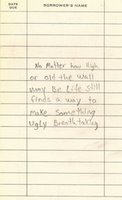 i’m wondering whether and how norman mailer’s passing will be noted at the american society of criminology meetings this week.
i’m wondering whether and how norman mailer’s passing will be noted at the american society of criminology meetings this week.
i learned much from the executioner’s song, mr. mailer’s biography and life history of gary gilmore. the pugnacious writer also introduced me to jack henry abbott, offering an important cautionary tale about the dangers of conflating talent and dangerousness.
i’m not a great admirer of the naked and the dead or mr. mailer’s other novels. as a longtime fan of his old rival, gore vidal, however, i’ll repeat the story of their scuffle on the dick cavett show in 1970:
Mailer was notorious for tussling with critics. Backstage at “The Dick Cavett Show” in the early 1970s, he head-butted Gore Vidal, who had written that Mailer’s violent streak put him in the same league as mass murderer Charles Manson. (After the head-butting, Vidal quipped, “Words fail Norman Mailer yet again.”)
ouch. that one hit him where it hurts. i sought some sort of youtube memory of mr. vidal and mr. mailer, but the best i could come up with is the latter’s messy ’68 brawl with rip torn. it was likely a set-up, but the video confirms my point: norman mailer knew a good deal about both violence and fraud, and he left behind work of great value to criminologists.







 in an attempt at real public criminology,
in an attempt at real public criminology,